Visit monuments, museums... Normandie
Rouen
The Cathedral
A centuries-old building, it is possible to follow the evolution of all periods of the Gothic style: Saint-Romain tower of the twelfth century, portal of booksellers and portal of Calende of the fourteenth century, Western facade and tower of Butter of the fifteenth and sixteenth Centuries, cast iron spire (152 meters) from the 19th century. Remarkable stained glass windows.
Le Gros Horloge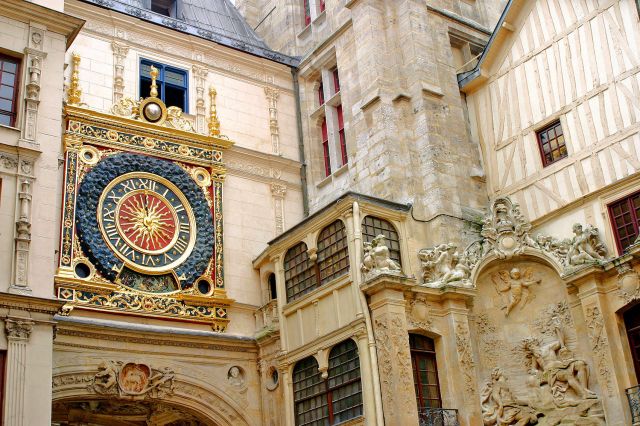
Rouen is proud of this monument admired by tourists coming from everywhere. the Gros Horloge, recently revealed, delivers the secrets concealed behind its dials. "The city with a hundred bells" houses, in the heart of its tight streets, a jewel that hangs Looks. Above its classical fountain, curves a splendid sculpted vault, renaissance masterpiece recently renovated. Raised to the skies, the belfry was built to receive the first bells of the city. It is home to one of the oldest clock mechanisms in Europe.
Musée des Beaux Arts
Paintings, sculptures, drawings, pieces of art ... the visit begins in the Renaissance with masterpieces signed Perugino, David and Veronese. Followed by Rubens, Caravaggio and Velazquez who represented the 17th century, while the next century brought together works by Fragonard, Lancret and Hubert Robert. Particularly numerous are then the great masters of the nineteenth, from Ingres to Monet via Géricault, Delacroix, Corot, Gustave Moreau, Millet and Degas.
Abbaye de Jumièges
It's a little Notre-Dame de Paris in the countryside ! Notre-Dame de Jumièges was the tallest church of its time in Normandy. Its towers, 46 meters high, still dominate the loops of the Seine. The destruction resulting from the French Revolution did not remove anything from its majesty to the former abbey, whose stones blend with the rich vegetation of the surrounding park. It is a true lesson of history and architecture that the abbey delivers through more than 10 centuries of construction, from the 4th to the 19th century, with, as jewel, the masterpiece of Norman Romanesque art that is The abbey's church.
Abbaye Notre Dame de Fontaine-Guerard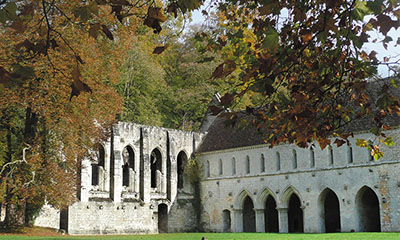
In a romantic park on the banks of the Andelle lies the ruins of this Cistercian abbey of nuns founded around 1190 and considered one of the most beautiful examples of Anglo-Norman Gothic architecture. Don't miss the buildings of the nuns with their hull-shaped ship structures, the vaulted choir church, the primitive chapel modified in the 15th century or the troglodytic cellar.
Le Havre
L'Eglise Saint-Joseph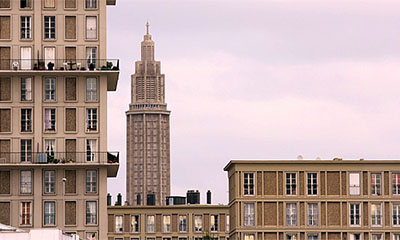
One of the buildings characteristic of the reconstruction of the city of Le Havre after the war. The architect Auguste Perret gave the city center a whole other dimension which made it possible to classify it with the World Heritage of Unesco.
Musée d'Art Moderne André Malraux
A museum in the light. The exceptional situation of the museum, open to the sea, the transparency of its architecture contribute to use light as one of the major challenge of the restructuring of this building. The permanent collections encompass four centuries of European art history, from the seventeenth century to the twentieth century. The modern painting is particularly well represented with the works of the painters attracted on the Normandy littoral by the quality of its light. Thanks to the recent donation Senn-Foulds, now integrated into the permanent show, the Malraux Museum holds the first impressionist collection of France after Paris. Works of Courbet, Boudin, Monet, Sisley, Pissarro, Dufy, Renoir, Matisse, Bonnard ...
Musée du Prieuré
The museum is housed in a 15th century inn that welcomes mariners in the harbor of Harfleur. The collections illustrate the local history from prehistory to the present day. Beautiful Roman ceramics and glassworks. Harfleur in the Middle Ages: the city, the fortifications, the houses, the church. regular exhibitions of contemporary artists...
Etretat 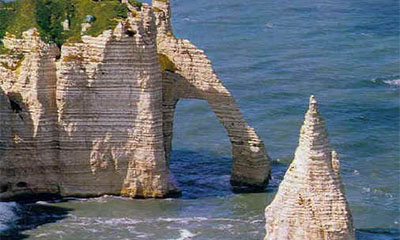
The impressionists Monet, Courbet ... The writers Guy de Maupassant, Alphonse Karr and especially Maurice Leblanc with Arsène Lupin... the composer Offenbach ... were seduced by Etretat and its fantastic cliffs. This famous seaside resort is an unforgettable moment.
Dieppe
Le Château-Musée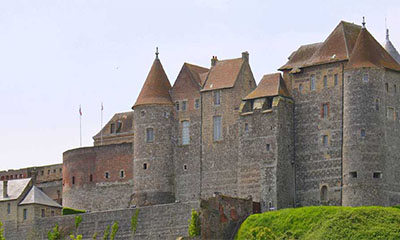
In this medieval building, naval rooms with ship models, maps, navigation instruments, paintings and engravings, furniture, Dutch paintings of the sixteenth and seventeenth centuries. French painting of the nineteenth and twentieth centuries including a collection of prints by Georges Braque. Collection Camille Saint-Saëns. The largest collection of ivories in Europe sculpted in Dieppe between the sixteenth and twentieth centuries.
Varengeville-sur-mer is famous for its magnificent gardens (see our gardens section), its church and cemetery overlooking the sea. Famous artists are buried there, including Georges Braque, who created the stained-glass window in the chapel. He also made a triptych of stained glass windows and the tabernacle in the chapel of Saint Dominic not far from there.




